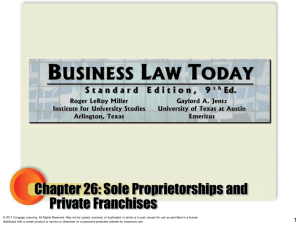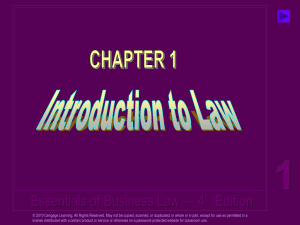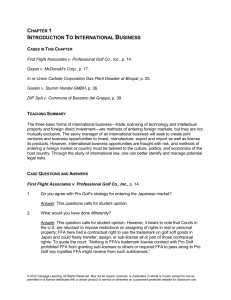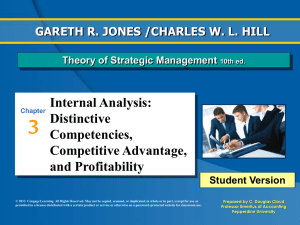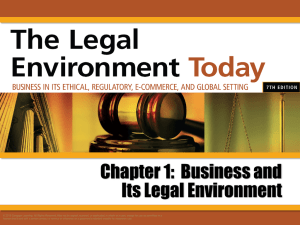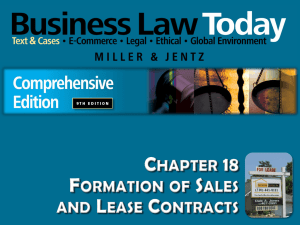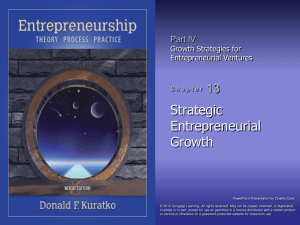Introduction to Global Business 1e
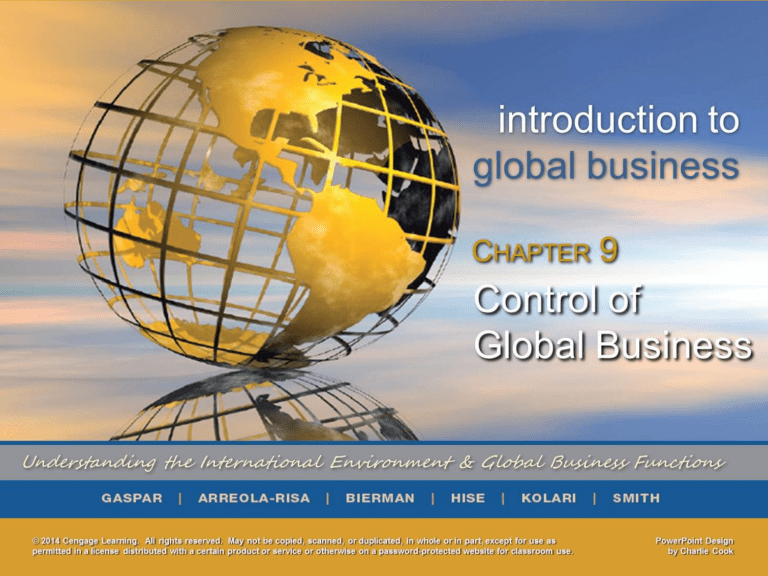
1. Discuss the importance of mission statements in general corporate strategy formulation.
2. Explain tactical versus operational plans in implementing corporate strategy, and Miles ’ and
Snow’s four basic types of longer-term strategic implementation.
3. Analyze various impediments to the coordination of strategic implementation that might exist for global businesses, and the positive role knowledge management and systems can play in this regard.
© 2014 Cengage Learning. All rights reserved. May not be copied, scanned, or duplicated, in whole or in part, except for use as permitted in a license distributed with a certain product or service or otherwise on a password-protected website for classroom use.
9 –2
4. Discuss and analyze various types of control systems utilized by global businesses including bureaucratic controls, interpersonal controls, and output controls and measurement systems such as Six Sigma initiatives.
5. Analyze the role that organizational culture plays in controlling organizational activities, and how, when necessary, organizational cultures can potentially be changed.
© 2014 Cengage Learning. All rights reserved. May not be copied, scanned, or duplicated, in whole or in part, except for use as permitted in a license distributed with a certain product or service or otherwise on a password-protected website for classroom use.
9 –3
Strategy Formulation
• Mission Statement
– Is a written statement of why a firm exists and what it plans to accomplish
– Provides general guidelines for the firm’s strategy formulation and decision-making processes
– Is useful in monitoring the firm’s performance against its stated mission and goals
© 2014 Cengage Learning. All rights reserved. May not be copied, scanned, or duplicated, in whole or in part, except for use as permitted in a license distributed with a certain product or service or otherwise on a password-protected website for classroom use.
9 –4
Shareholders versus Stakeholders
• Shareholder Model of Strategy Formulation
– The key strategic purpose of a business is to maximize financial returns for its owners/shareholders
• Stakeholder Model of Strategy Formulation
– Businesses exist to benefit not just their shareholders, but also all groups such as employees and customers that have a meaningful stake in their operations
© 2014 Cengage Learning. All rights reserved. May not be copied, scanned, or duplicated, in whole or in part, except for use as permitted in a license distributed with a certain product or service or otherwise on a password-protected website for classroom use.
9 –5
EXHIBIT 9.1
SHAREHOLDERS MODEL OF STRATEGY FORMULATION
© 2014 Cengage Learning. All rights reserved. May not be copied, scanned, or duplicated, in whole or in part, except for use as permitted in a license distributed with a certain product or service or otherwise on a password-protected website for classroom use.
9 –6
EXHIBIT 9.2
STAKEHOLDER MODEL OF STRATEGY FORMULATION
© 2014 Cengage Learning. All rights reserved. May not be copied, scanned, or duplicated, in whole or in part, except for use as permitted in a license distributed with a certain product or service or otherwise on a password-protected website for classroom use.
9 –7
Strategy Implementation
Operational Plans
Very short-term (less than one year) plans that support annual goals
Tactical Plans
One to three year plans formulated for implementing strategic goals
Strategic Plans
Long-term plans (five or more years) for achieving strategic goals
© 2014 Cengage Learning. All rights reserved. May not be copied, scanned, or duplicated, in whole or in part, except for use as permitted in a license distributed with a certain product or service or otherwise on a password-protected website for classroom use.
9 –8
Miles and Snow Typology
Prospectors
Extend their success through global expansions and finding new market opportunities
Defenders
Concentrate upon existing operations and defending their home turfs
Reactors
Respond arbitrarily to strategic actions initiated by competitors
Analyzers
Take a middle ground approach between being prospectors and defenders
© 2014 Cengage Learning. All rights reserved. May not be copied, scanned, or duplicated, in whole or in part, except for use as permitted in a license distributed with a certain product or service or otherwise on a password-protected website for classroom use.
9 –9
Coordination of Strategic Implementation
Legal Political
Impediments to Coordination
Economic Technological
Other impediments
© 2014 Cengage Learning. All rights reserved. May not be copied, scanned, or duplicated, in whole or in part, except for use as permitted in a license distributed with a certain product or service or otherwise on a password-protected website for classroom use.
9 –10
Knowledge Management and Systems
Tacit
Knowledge
Is informal in nature and difficult to communicate
Explicit
Knowledge
Is codifiable and easy to communicate or write down
Absorptive
Capacity
Is the ability of organizations to recognize, assimilate, and apply new knowledge
© 2014 Cengage Learning. All rights reserved. May not be copied, scanned, or duplicated, in whole or in part, except for use as permitted in a license distributed with a certain product or service or otherwise on a password-protected website for classroom use.
9 –11
Control Systems
• Bureaucratic Controls
– Systems of rules and regulations promulgated within a global business
• Interpersonal Controls
– Involves executives engaging in personal contact with subordinates as a way of managing an organization
• Output Controls and Measurement
– Involves establishing specific goals on given metrics and then measuring to what extent these goals are being achieved at certain time intervals
© 2014 Cengage Learning. All rights reserved. May not be copied, scanned, or duplicated, in whole or in part, except for use as permitted in a license distributed with a certain product or service or otherwise on a password-protected website for classroom use.
9 –12
Output Controls and Measurement
Profits
Corporate social responsibility
Controlling and
Measuring
Output
Quality control
Market share
Growth
Productivity
© 2014 Cengage Learning. All rights reserved. May not be copied, scanned, or duplicated, in whole or in part, except for use as permitted in a license distributed with a certain product or service or otherwise on a password-protected website for classroom use.
9 –13
Organizational Culture and the Change Control Function
• Organizational Culture
– Is the personality of a given organization, its shared norms, and values
• Types of Organizational Culture
– Strong cultures can either support or resist change
– Weak cultures provide little guidance to employees
• Organizational Change
– Involves the implementation of a different business or cultural path for an organization
© 2014 Cengage Learning. All rights reserved. May not be copied, scanned, or duplicated, in whole or in part, except for use as permitted in a license distributed with a certain product or service or otherwise on a password-protected website for classroom use.
9 –14
KEY TERMS mission statement shareholder model of strategy formulation stakeholder model of strategy formulation operational plans tactical plans prospectors defenders reactors analyzers tacit knowledge explicit knowledge absorptive capacity bureaucratic controls interpersonal controls output controls and measurement organizational culture organizational change
© 2014 Cengage Learning. All rights reserved. May not be copied, scanned, or duplicated, in whole or in part, except for use as permitted in a license distributed with a certain product or service or otherwise on a password-protected website for classroom use.
9 –15





